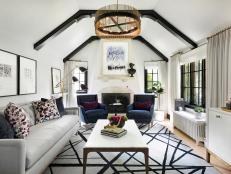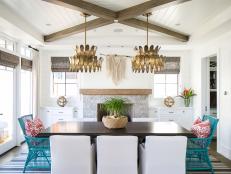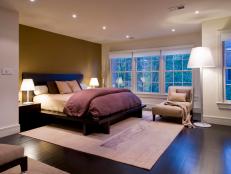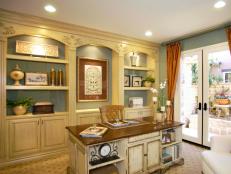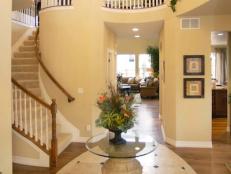Lighting Tips for Every Room
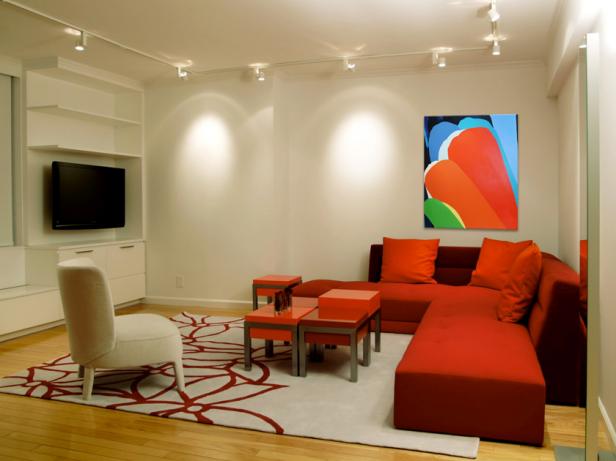
Whether you want to improve the lighting for a specific room or plan a whole-house lighting makeover, keep these room-by-room tips in mind:
Living Rooms / Family Rooms
The concept of layering light is particularly important in the living/family room, an area of the house where people tend to gather for long stretches of time and engage in an array of activities, including conversation, watching TV, reading, playing board games and using a laptop. "In rooms where people spend a lot of time, I like to get away from recessed downlights, and instead use lights that bounce off the ceiling for ambient illumination," says lighting designer Markus Earley, of earleylight, in Providence, R.I. "Bouncing light off the ceiling creates a sense of brightness in the room, and avoids the shadows or downward direction of recessed lights."
Earley also favors bouncing light off the ceiling because it suits the human tendency to visually perceive vertical planes—looking up—versus looking at our feet.
To accomplish ambient lighting that bounces off the ceiling of a living room, Earley suggests integrating cove or valance lighting into the room's architecture. "Or, if you have bookcases or an entertainment unit that doesn't go all the way to the ceiling, there's an opportunity to add a piece of millwork and put a linear fluorescent behind it," suggests Earley, who likes the new slim T5 fluorescents that are dimmable and have good color rendering and a warm appearance.
Another way to provide ambient lighting in a living room is to wash the walls with light, which can be accomplished with soffit or valance lighting, recessed or track lighting that is directed toward the walls, or even with plug-in floor lamp torchieres with translucent upward facing globes.
Task lighting for a living room may be provided by table lamps, such as pharmacy-style adjustable lamps placed near a reading chair or game table. "An apothecary-style reading lamp with an LED or incandescent light bulb is one of my all-time favorite choices for task lighting," says interior designer Cheryl Katz of C&J Katz Studio in Boston.
Accent lighting in a living room may be used to focus on an architectural element, such as a fireplace or bookcase, or on a painting, sculpture or plant. Uplights placed on the floor may be used as accent lighting for a plant, while track lighting may be used as accent lighting for artwork. When lighting an art collection, the brightness and heat generated by a type of lighting must be considered; for some lighting designers, accent lighting for artwork is a particular area of expertise.
In a large living room formerly lit by recessed cans and table lamps, a new lighting design that includes architectural lighting might consist of two valances running the length of two opposite walls (mounted about a foot below ceiling height), one soffit installed directly above a fireplace (at ceiling height), and a table lamp placed next to a reading chair. Wall switches would control the valance and soffit, or a keypad could control all the lighting with preprogrammed 'entertaining,' 'reading,' 'all on' and 'all off' settings.
In a modest living room that has one wall switch wired to an outlet, a homeowner fix that provides energy efficiency and versatility would be to replace the wall switch with a dimmer, and add faux-cove lighting by concealing a fixture behind a piece of millwork added to the top of a bookcase, and wired to the outlet controlled by a dimmer.
Lumens: Ambient lighting for a living room should be 1,500-3,000 lumens. Task lighting for reading should be a minimum of 400 lumens.
Living Room Lighting Designs
See All PhotosKitchens
With its heavy focus on the functions of food preparation and cleanup, as well as its tendency to be a gathering spot, the kitchen requires careful consideration of task and ambient lighting. Think in particular of the task lighting for the counters, where most of the work takes place, and over the sink.
One of the main reasons sinks have often been located at a window is to take advantage of natural light, and this layout is still highly recommended by lighting experts. Augment the natural light with a ceiling mounted or recessed fixture above the sink. Using undercabinet lighting is a good way to illuminate the countertop work surfaces without relying on an overhead light that will cast shadows on the person working at the counters.
When Providence lighting designer Markus Earley, an adjunct professor at the Rhode Island School of Design, upgraded the lighting in his own kitchen recently, he compared LED and compact fluorescent lighting options for his undercabinet lighting, and chose T5 linear fluorescent light bulbs that are dimmable and emit a warm light with a correlated color temperature (CCT) of 3,000 Kelvin. "My one concern with LED technology is that the LED chip is a tiny little directional light source so that in a linear undercabinet LED light, you have a multiplicity of little tiny light sources that create shadows," Earley says.
A basic lighting plan for a modest kitchen might consist of a central, ceiling-mounted fixture providing ambient light, with undercabinet fixtures providing task lighting for the counters, soffit lighting providing task lighting above the sink, and a pendant providing task or ambient lighting over the island. This traditional lighting plan is adequate for many kitchens and can be improved simply by putting all lighting on a dimmer, and choosing energy efficient light bulbs.
A new lighting plan for a medium-sized kitchen might call for cove lighting along two opposite kitchen walls to provide ambient lighting that bounces light off the ceiling, instead of recessed downlights or ceiling-mounted central fixtures, both of which primarily send light straight down. Valance lighting above the sink and undercabinet lighting would provide the task lighting.
Lumens: Ambient kitchen lighting should be 5,000-10,000 lumens, with task lighting at counters, sink and range a minimum of 450 lumens in each area.
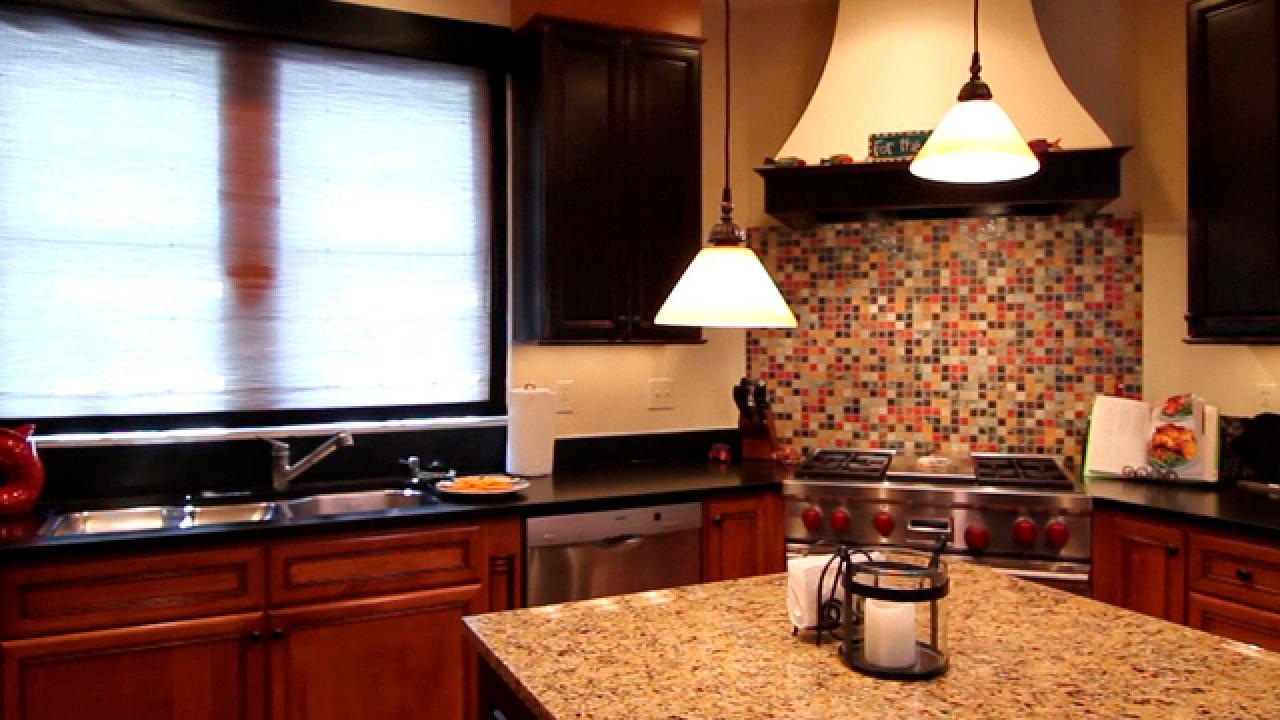
Bathrooms
With its emphasis on personal grooming that requires viewing oneself in a mirror, the bathroom requires careful consideration of lighting placement. Too many bathrooms feature a central ceiling-mounted fixture that casts shadows on a person standing in front of the mirror. "One of the best improvements you can make in a bathroom is to light both sides of the mirror," says Patricia Rizzo of the Lighting Research Center. In small baths, where one may have to choose between a wall-mounted fixture on the side of the mirror or an overhead fixture, lighting designers say to always go with the wall-mounted placement. "You don't want to cause shadows in a bathroom," says Rizzo.
A common lighting design for older bathrooms may feature a central ceiling-mounted fixture plus a fixture above the mirror. An improved lighting plan would eliminate those fixtures and replace them with three wall sconces, two on either side of the mirror, and one on an opposing wall (offset from mirror position).
Lumens: Ambient lighting in a bathroom should be 4,000-8,000 lumens, with task lighting at the mirror a minimum of 1,700 lumens.
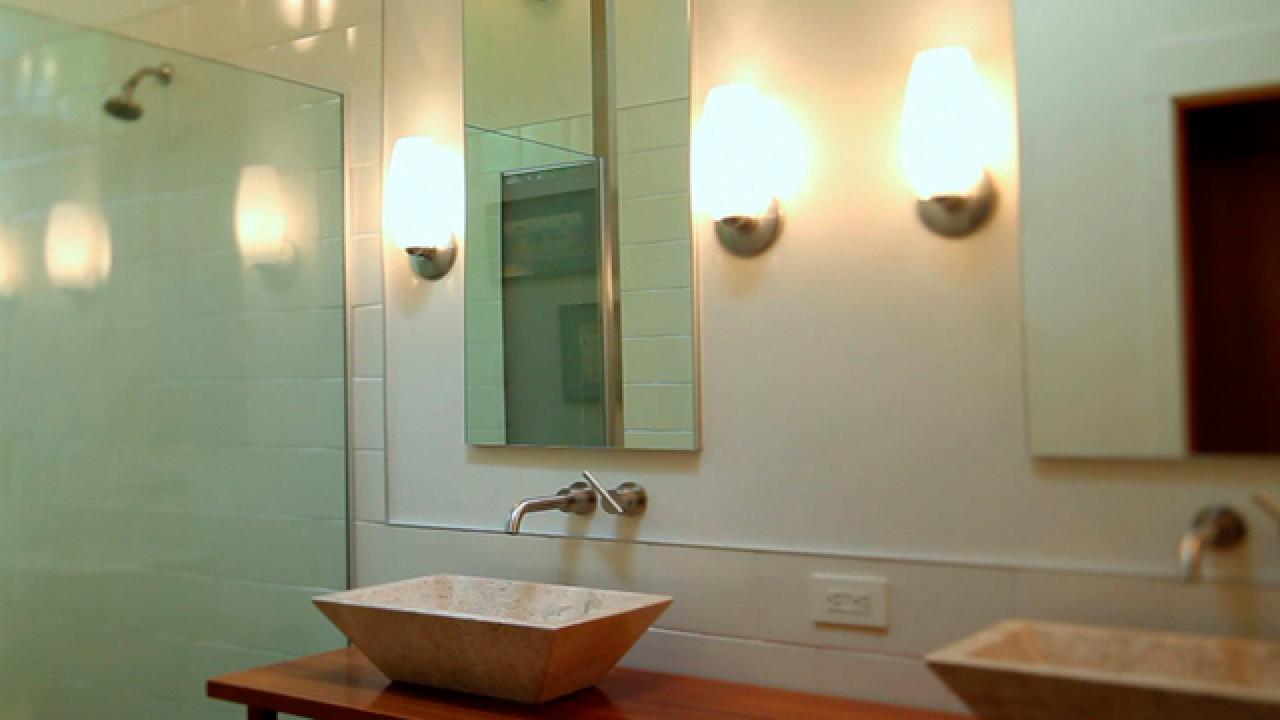
Outdoors
Several purposes are served by outdoor lighting, including safety (on pathways), security, and pure aesthetics (playing up a beautiful plant or tree). Jody Pritchard, a lighting designer in San Francisco, says one of her first bits of advice regarding landscape lighting is to choose quality fixtures for durability. "The outdoor environment is so harsh, particularly on the coast, that it is worth paying a little more up front so you don't end up replacing fixtures every three years," says Pritchard.
When planning landscape lighting, Pritchard suggests thinking in threes: light something close to the house, something midrange in the yard, and something in a far corner. "That way you create interesting focal points when viewed from the house at night," she says. One overlooked benefit of outdoor lighting is that it minimizes the reflection of glass surfaces viewed from inside the house at night. "If you provide something outside that is lit, even a plant just outside a French door, you will be looking beyond the glass reflection," notes Pritchard.
Avoid the mistake of using too much light outdoors. "People often think more is better, brighter is better, but outside wherever you create a super bright area you've also created super dark areas, and that can be unsafe. It's better to have low levels of lighting all around," says Pritchard.
The front door is one of the few outdoor areas where a brighter light is acceptable, with a traditional lighting plan calling for two wall-mounted fixtures flanking the door.
Lumens: Lighting at the front entry should be 1,000-2,000 lumens; on pathways, a minimum of 300 lumens is recommended.
Dining Rooms
The primary focus of dining room lighting is the table, and fixtures placed directly above the table may provide both ambient and task lighting for this room. Dimmers are particularly desirable as they provide flexibility in establishing a relaxing atmosphere when entertaining. An important consideration in a dining room that has French doors is to light something outside the doors (see "Outdoor" section) so that people using the dining room at night have a focal point beyond their reflection in the glass doors. "Light one element outdoors and you have a simple solution to the problem of glass reflection in a room at night," says lighting designer Lana Nathe.
Another consideration when lighting a dining room is to consider the wall treatment, as dining rooms often have decorative paint treatments or wallpapers. A darker color paint on the walls will reflect less light, so more lumens may be required in the room's light fixtures.
A traditional lighting plan for a dining room consists of a chandelier above the table, plus a pair of wall sconces flanking a prominent breakfront or sideboard, with all lighting on a dimmer. An upgraded lighting plan might include cove lighting on two opposing walls and a dimmable chandelier over the table.
Lumens: Ambient and task lighting combined in a dining room should be 3,000-6,000 lumens.
Dining Room Lighting Designs
See All PhotosBedrooms
Bedside reading and closet lighting are two of the primary concerns in a bedroom lighting plan. For bedside reading, lighting experts suggest wall-mounted light fixtures with adjustable arms so that the light can be directed on the reading material. Each bedside light should operate on its own switch, either directly on the fixture or a wall switch within easy reach.
Ambient lighting may be provided by floor lamps, architectural lighting, or a pair of sconces flanking a wall mirror. Because the bedroom is a room where a relaxing, sympathetic atmosphere is welcomed, it may be best to avoid central ceiling-mounted fixtures that might be perceived harshly when viewed from bed. Consider the paint color of bedroom walls when planning light output as dark-colored walls reflect less light. For a closet, ceiling-mounted or recessed fixtures are commonly used.
A traditional lighting plan for a bedroom might consist solely of floor and table lamps, with table lamps on nightstands and dresser. A new lighting plan might include either wall-mounted fixtures flanking the bed or table lamps on the nightstands, plus a pair of wall-mounted sconces near the dresser.
Lumens: Ambient lighting in the bedroom should be 2,000-4,000 lumens, with a minimum of 500 lumens for each reading light, and 400 lumens for closet lighting.
Bedroom Lighting Designs
See All PhotosHome Offices
Identifying where particular tasks will take place in a home office is the first step to designing a lighting plan for this important room; reading books or paperwork, working at the computer, and talking on the phone are common tasks. A key consideration is to ensure that a light fixture is not reflected in a computer screen, so knowing the position of the computer—which may be limited by the location of outlets and internet cables—is essential. A task light for the desk area should be positioned to minimize shadows and reflections, so place it to the right or left side of the occupant's main work orientation.
Lighting designer Patricia Rizzo favors indirect lighting (reflected off walls or ceilings, rather than distributed in one direction) for a home office. "Use cove lighting to wash the ceiling or wall sconces that project the light upward, or a floor lamp torchiere that directs light upward if a plug-in fixture is your only option," Rizzo says.
If the room's layout permits, positioning a reading chair next to a window allows for natural light to be used for reading during the day. A table lamp can provide task lighting for reading at night.
Lumens: Ambient lighting for a home office should be 3,000-6,000 lumens, with task lighting at the desk a minimum of 1,200 lumens.
Home Office Lighting Designs
See All PhotosEntries, Hallways & Stairs
The entry points and pathways through a home typically require nothing more than ambient lighting, unless there are focal points such as artwork or architectural elements that should receive accent lighting. A small entry may be sufficiently lighted by a ceiling-mounted or recessed fixture or a wall sconce. A double height entry with a staircase may require a chandelier with lighting controls at both the bottom and top of the stairs. Ambient lighting in hallways may be provided by recessed fixtures, ceiling-mounted fixtures or wall sconces.
If a hallway is used as a gallery for artwork or photographs, consider accent lighting, which is achieved by precise positioning of directional fixtures that use light bulbs emitting very narrow beams of light. PAR (parabolic aluminized reflector) and MR (multi-faceted reflector) light bulbs are often used for accent lighting; fixtures include ceiling-mounted track lighting or recessed fixtures. Proper accent lighting of artwork requires professionals with skill and experience in locating and aiming the fixtures to avoid glare and ensure that artwork is not damaged.
Lumens: Ambient lighting for entries and stairways should be 1,200-4,000 lumens; ambient lighting for a hallway should be 1,200-2,500 lumens.







